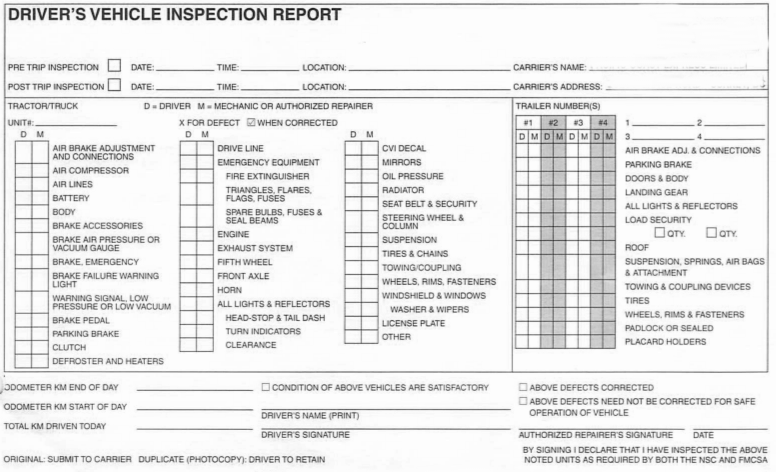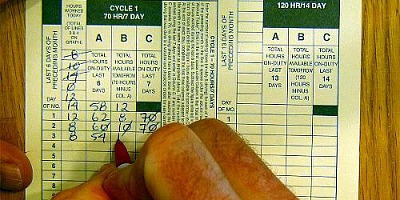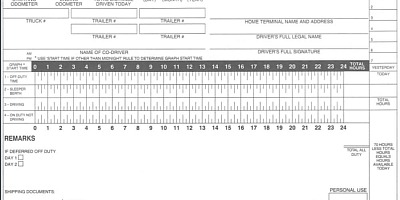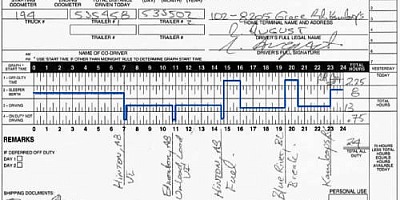Flagging your logbook to show that you did an activity, but didn't change duty status.
Name of Video Here!
Closed Caption
Introduction
Hi there smart drivers.
Rick with Smart Drive Test.
Another quick tip for log book smart.
Today we're going to talk about flagging.
What is Flagging?
Flagging is when you don't change duty status lines in your logbook.
You just draw a vertical line down, putting the location.
If you're in the United States or Canada, it's the city & state of where you're at.
Or you can put the highway down and the mile marker.
And you can see the example here behind me of flagging.
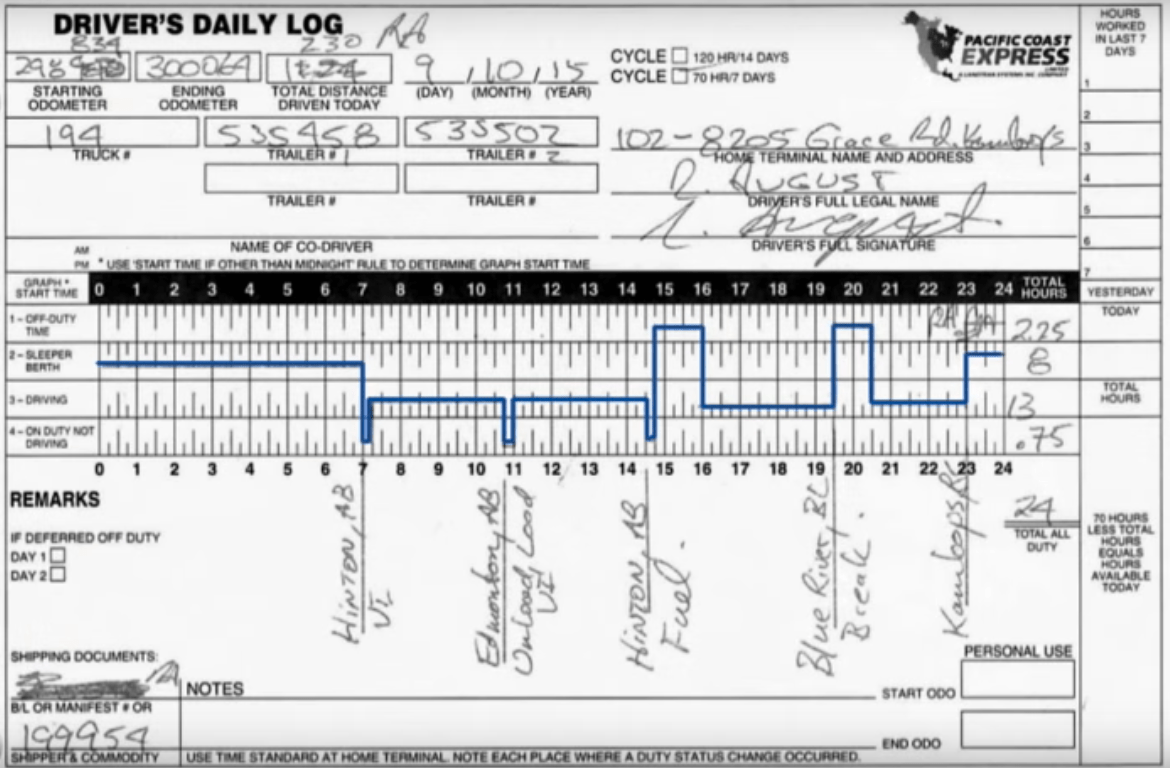
So you don't change duty status.
Oftentimes it's a driving line and it's less than seven minutes.
If it's more than seven minutes, often they recommend that you change duty status lines.
Enroute & Pre-Hill Inspections, Load Security Checks
But flagging is for hill checks, brake checks and those types of things: pre-trip inspections, load inspections, and whatnot when you don't change duty status and it only takes you five or six minutes to actually do what you're going to do.
This is especially important for people running the mountains and you get out and do a pre-hill check.
Because if you put a line down in your log book, it indicates that you, in fact, did stop.
Because it's pretty hard to put a line in your log book if you don't stop.
So put a line in your log book - that way if you get pulled over by authorities, or you're unfortunate enough to be involved in a crash going down the hill or end up on the runaway lane or whatnot, there is a line in your log book that shows and indicates that you, in fact, did stop at the brake check.
You did stop and check the brakes--checked vehicle and whatnot.
So it's called flagging.
You can see the example here in the image - so do that every time you stop to check something: load security, brakes and those types of things.
Flagging--do it in your logbook.
Conclusion
I'm Rick with Smart Drive Test, thanks very much for watching.
If you like what you see here share, subscribe, leave a comment down in the comment section.
As well, if you're going for your commercial license make sure you check out the videos below-- lots of great information there.
If you're on a mobile device, check out the cards in the upper right-hand corner.
Those too will give you links to the videos.
Question for my smart drivers:
Have you heard of flagging before and do you do it in your logbooks?
Leave a comment down in the comment section.
All of that helps out the new drivers working towards your CDL license.
Thanks very much for watching - good luck on your road test & remember, pick the best answer, not necessarily the right answer.
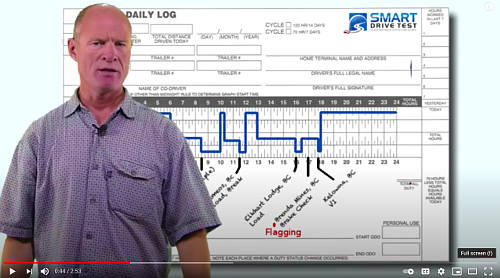
Have a great day.
Bye now.
Blooper
[CLOSING CREDITS, MUSIC, & BLOOPER] What was the question you asked me? Have you seen Firestar or Black Widow or buzby girl or....
I don't know what buzzy girl is? Ya...
I don't know what it is either.



